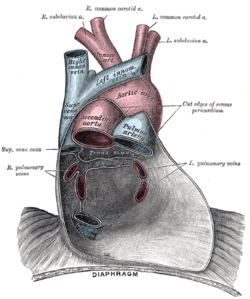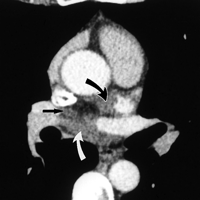Pericardial sinus Definition
It refers to the wall at the back of the pericardial sac. It is ventrally bound by a pericardial membrane within which lies the heart.
Pericardial sinus Types
There are two types of this structure:
Oblique – It is the small concavity in the pericardial cavity which is situated behind the base of the heart. It is laterally bound by the pericardial reflections on the inferior vena cava and the pulmonary veins. It is posteriorly bound by the pericardium.
It is also referred to by other names like:
- Oblique sinus of pericardium
- Sinus obliquus pericardii
Transverse – It is a passage between the posterior and the superior reflections of the serous pericardium. It is located posterior to the pulmonary trunk and the ascending aorta, superior to the left atrium and anterior to the superior vena cava.
It is known by various other names, such as:
- Sinus transversus pericardii
- Theile canal
- Transverse sinus of pericardium
Pericardial sinus Function
It serves to keep oxygenated haemolymph from entering the heart. It functions as a vertebrate atrium more than as a pericardial sac.
Pericardial sinus Images
Check out these useful pictures of this pericardial wall to get an idea about its physical appearance.
Picture 1 – Pericardial sinus
Picture 2 – Pericardial sinus Image
References:
http://en.wikipedia.org/wiki/Pericardial_sinus
http://useful_english.enacademic.com/260297/pericardial_sinus
http://www.medilexicon.com/medicaldictionary.php
http://www.medilexicon.com/medicaldictionary.php?t=82277



No comments yet.